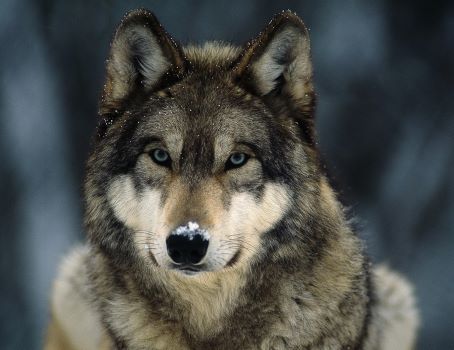Canis lupus
Life in the 21st Century is a reader-supported publication. Please become a paid subscriber.
Received a cheery note the other day:
“Monday, 18-Dec-2023 was a historic day in the history of North American wildlife management, as the first gray wolves were released in northwestern Colorado by Colorado Parks and Wildlife staff, beginning the process of restoring one of our native species. The Rocky Mountain Wolf Project, along with conservationists throughout the country, celebrated the release, which was over three decades in the making.”
Just as great — “The reintroduction followed decades of planning by conservationists, a state plan for migrating wolves by CPW in 2004, and Proposition 114 in 2020—the first use of direct democracy to restore an endangered species anywhere in the world.”
This is now the fourth state after Idaho, Montana and Wyoming (Yellowstone), who have reintroduced the gray wolf. They once roamed across all the contiguous states. As Clark wrote two centuries ago, “For me to mention or give an estimate of the different species of wild animals on the river (Yellowstone), particularly buffalo, elk, antelopes, and wolves, would be increditable.” The FWS writes, “During the early 1900s, predator-control programs resulted in the elimination of wolves throughout most of the conterminous United States, with the exception of northeast Minnesota.”
Nature can be incredibly resilient. One of the easiest, you would think, solutions to conservation and biodiversity is simply giving old, established eco-systems and their species room. Nonetheless, that's a lot easier said than done on a small planet with 8 billion people, all wanting the consumption habits of 350 million Americans.
“This initiative is bigger than five wolves… This is the culmination of action by citizens and practitioners who are working together to rectify past actions and make a difference in an era of biodiversity loss. Putting an apex predator back into a system not only reassembles food webs and restores ecological integrity, but it also provides hope that we can live in a world where both humans and wildlife can exist”. said Joanna Lambert, PhD, a University of Colorado Boulder professor and science advisor to the Rocky Mountain Wolf Project.
Most amazing is what's been learned about the complex internal interaction of ecological systems from the reintroduction of wolves to Yellowstone. The wolves brought down an out of control elk population allowing the restoration of willow and other trees along river and stream beds. This in turn helped insect, bird, fish, beaver, and grizzly populations. Here's a nice short video on what's happened.
It was thought dogs came from the gray wolf, but it is now clear they are sister species, both descended from a now extinct ancestor.
The wolf is a symbol of our not understanding complexity. We as a species are a result of a long and amazingly complex process of evolution. In the last hundred years, we've destroyed much of that complexity, replacing it with technological homogeneity. We may be big and bad, but we're a lot less smart than we want to believe and at this point completely bereft of wisdom. That the wolf survives is hope for our future.


